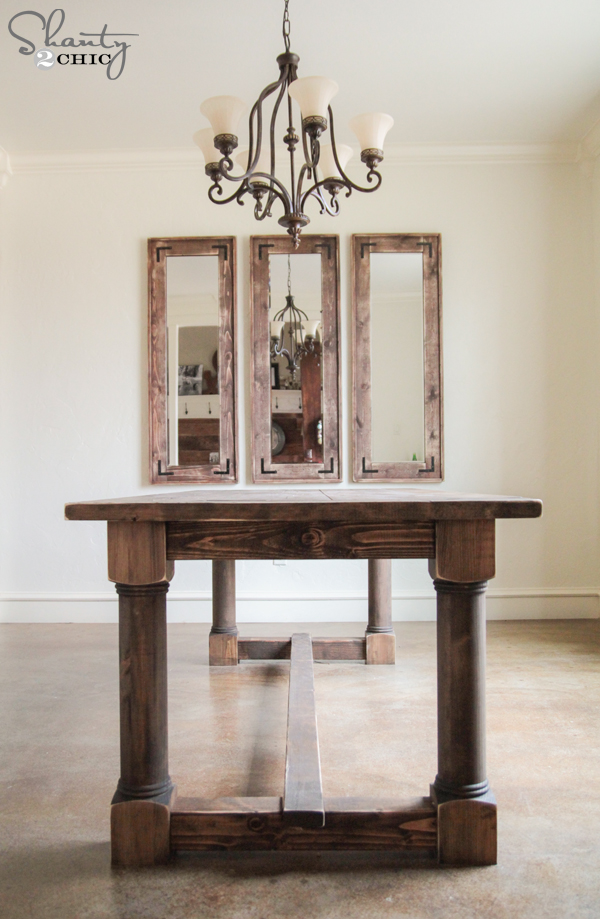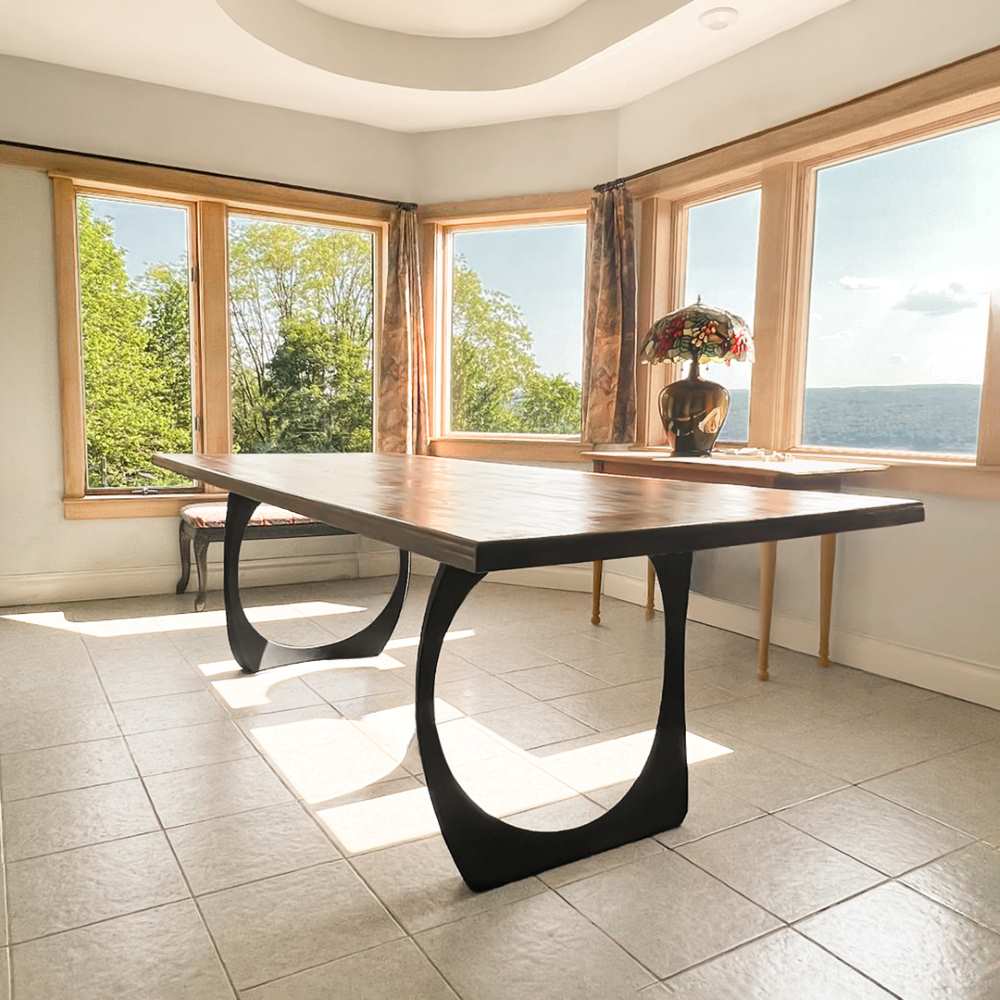Tips for Installing Dining Room Table Legs for a Modern Look
Tips for Installing Dining Room Table Legs for a Modern Look
Blog Article
From Standard to Modern: Find the Ideal Dining Space Table Legs for Your Style
The option of eating room table legs plays a crucial duty in specifying the overall character of your space, linking the void between standard workmanship and contemporary appearances. While timeless styles such as cabriole and transformed legs stimulate a sense of classic refinement, modern styles like hairpin and geometric alternatives present an opportunity for striking visual passion. Examining the right balance between these designs calls for a nuanced understanding of your existing decoration and individual taste. As you consider these aspects, the question stays: exactly how can you flawlessly incorporate these varied leg designs to develop a harmonious eating experience?
Recognizing Table Leg Styles
The range of dining-room table leg designs can significantly affect both the visual appeals and functionality of the space. Each leg design contributes special sensible functions and visual aspects, dealing with varied design preferences and usage requirements. Recognizing these styles is crucial for choosing the right eating table that aligns with your overall indoor style vision.
For instance, tapered legs offer a clean, classic appearance that can boost a room's sophistication, while pedestal bases offer stability and optimize legroom, making them perfect for smaller sized rooms. Barrette legs, a hallmark of mid-century contemporary design, present an industrial panache, permitting for a ventilated, open feel. Trestle legs evoke rustic charm, offering durable assistance and a sense of timelessness.
Moreover, the choice of products plays a significant duty. Wood legs can bring heat and texture, whereas metal alternatives often share a sleek, contemporary ambiance. Eventually, comprehending table leg designs is vital for developing a natural eating area that mirrors individual style while guaranteeing usefulness and convenience. By thoughtfully taking into consideration these components, you can boost both the visual and practical allure of your dining space.
Conventional Table Leg Options
When choosing dining-room table legs, typical choices frequently embody classic style and craftsmanship. These styles reflect a rich heritage and a dedication to top quality, making them ideal for those that appreciate classic appearances.
Among one of the most renowned conventional leg designs is the cabriole leg, defined by its graceful rounded form. This design commonly features attractive makings and is most commonly found in Queen Anne and Chippendale furniture. One more preferred choice is the transformed leg, which flaunts a series of smooth, rounded shapes that offer a classic look while preserving security.
Moreover, the straight leg, while easy, offers a durable and basic structure that can blend seamlessly with a variety of tabletop designs. For those attracted to ornate describing, claw-and-ball feet legs stimulate a sense of magnificence and can serve as a stunning prime focus in any kind of dining space.
Lastly, stand bases, although not purely legs, supply a different standard alternative that enables enough legroom and can be wonderfully carved. Each of these standard leg styles contributes to the overall atmosphere of a dining-room, weding feature with aesthetic appeal.

Modern Table Leg Styles
Modern table leg layouts provide a varied range of styles that emphasize cutting-edge products and tidy lines. These styles frequently prioritize performance while acting as striking focal points within a dining space. Minimal looks are widespread, with legs crafted from materials such as steel, glass, and crafted wood, which add to a contemporary and ventilated feel.
One prominent style is the barrette leg, identified by its slender, conical framework that provides security without overwhelming the table top (dining room table legs). This design is often found in mid-century modern-day furnishings and can effortlessly match various dining table forms. An additional fad is making use of geometric forms, where legs might take on pop over to this web-site angular or unbalanced forms, including visual passion and a touch of creativity

Blending Designs for One-of-a-kind Rooms
Typically, homeowners seek to produce distinct eating areas that reflect their individual style by blending numerous layout elements. This approach permits the unification of diverse aesthetics, leading to an unified yet distinct setting. As an example, pairing a rustic wood table with smooth, modern steel legs can develop an attractive contrast that boosts the area's total appeal.
In addition, incorporating vintage table legs with contemporary table tops can evoke a feeling of history while preserving a modern-day sensibility. Such combinations not just showcase specific taste yet additionally motivate imagination, enabling property owners to curate a space that feels both individual and welcoming.
Shade plays a critical duty in this mixing procedure; picking table legs that complement or contrast with the existing color system can enhance visual interest. Whitewashed legs can soften the boldness of a dark table surface, creating a well balanced visual.
Tips for Selecting the Right Legs
Choosing the right table legs is vital for achieving both capability and visual allure in your dining room. Begin by thinking about the overall style of your space. Standard settings gain from legs that feature intricate carvings or transformed click here for more layouts, while contemporary areas may require smooth, minimal designs.
Next, analyze the elevation and stability of the legs. dining room table legs. Standard eating tables vary in between 28 to 30 inches in elevation, so ensure the legs complement this measurement for comfort. Additionally, robust products, such as wood or steel, can enhance security and durability
Review the leg shape as well-- alternatives consist of directly, tapered, or stand designs. Straight legs supply a timeless appearance, while tapered legs can include a touch of sophistication. Pedestal bases provide ample legroom and are perfect for smaller sized areas.
Final Thought
In summary, choosing the perfect eating space table legs requires mindful consideration of both conventional and modern-day designs. By harmonizing leg style, height, and material with Read More Here the general decoration, a cohesive and inviting environment can be attained.
The selection of dining room table leg designs can significantly influence both the appearances and capability of the area. Eventually, comprehending table leg styles is vital for producing a cohesive eating location that shows individual style while making certain practicality and convenience.One of the most famous typical leg styles is the cabriole leg, characterized by its stylish bent shape. Straight legs use a traditional appearance, while conical legs can add a touch of sophistication.In summary, picking the perfect eating room table legs calls for careful factor to consider of both conventional and contemporary styles.
Report this page